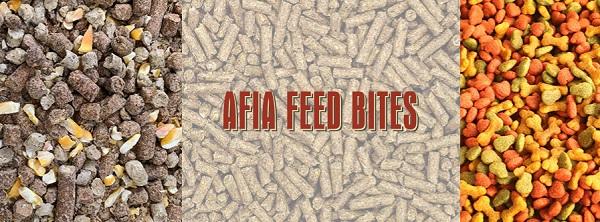No, There Isn't a Conspiracy Around Chicken Feed and Reduced Egg Production
Published: February 15, 2023
By: Victoria Broehm / AFIA
This past week, there has been an uptick in social media videos and news stories perpetuating false claims about commercial chicken feed and its impact on the availability and price of eggs. To better understand how diet relates to a hen’s egg output, I spoke with our resident animal nutritionist, Paul Davis, Ph.D. Davis has a doctorate in animal nutrition and the added benefit of being able to tap into fellow nutrition experts’ knowledge on the American Feed Industry Association Nutrition Committee. Below is a summary of this conversation, responding to some of these claims.
Are homemade diets for laying hens better than commercial feed?
No. Commercial feed companies use staff nutritionists and consultants, with many years of specialized training, to develop precise diets that optimize the health, performance and wellbeing of animals, while balancing their customers’ needs and budgets. These trained professionals have access to myriad ingredients to ensure hens’ complete nutrient requirements are met. For example, they may select ingredients with higher calcium levels to increase egg production, and sometimes even small tweaks in diet formulations can make a huge difference, such as selecting a feed with 3.5% calcium levels versus ones with 1% calcium levels.
While smaller scale farmers can certainly provide their hens with adequate nutrition through homemade feeds, they may find it difficult to account for all the amino acids, vitamins and minerals required in their hens’ diets without some specialized ingredients and knowledge of feed formulation.
Are commercial feed manufacturers selecting lower-quality ingredients to save costs?
No. All ingredients used in animal food must be reviewed and approved via various regulatory channels before they are used in animal diets. Feed manufacturers’ number one goal is to provide adequate and safe nutrition in accordance with those strict regulatory requirements. They can accomplish this by using advanced software to select from a menu of ingredients to optimize feed formulas with respect to nutritional requirements. Keep in mind that some ingredients may change year to year or season to season due to poor crop output, extreme weather events that destroy crops (such as the United States’ extended drought) or ongoing supply chain disruptions, but feed manufacturers work behind the scenes to account for these changes while minimizing the impacts to farmers.

Are local feeds better than commercial feeds?
Not necessarily. Most nutritionists agree that local or commercial feeds should not impact animal production; however, for layer hens, which require diets rich in calcium, phosphorous, vitamins and other micro ingredients, it may be necessary to obtain ingredients from non-local sources. Some farmers may have a preference toward local versus a national brand, but the most important thing is to ensure that the feed is transported and stored properly to maintain shelf-life, quality and freshness of ingredients.
Is bad feed the reason why my hens have stopped laying eggs?
Not necessarily. Commercial feed that is formulated specifically for laying hens should offer adequate nutrition for egg production. Decreases in egg output can be attributed to one or a combination of factors, including:
- improper nutrition (e.g., feeding the wrong type of food for desired production).
- feed freshness (e.g., using expired feed or improperly stored feed).
- shorter day length (i.e., less hours of sunlight).
- colder temperatures.
- poor management practices (e.g., not providing clean water).
- onset of parasites or viruses (e.g., such as the current devastating outbreak of highly pathogenic avian influenza).
- stress (e.g., fox in the henhouse!).
- age of the hen.
- overall health of the hens.
While it can be easy to blame insufficient nutrition on poor egg production, it is important for farmers to discuss their concerns with licensed poultry specialist veterinarians to rule out any other underlying factors, particularly if several farms in the region are experiencing the same issues.
Are feed manufacturers inserting RNA into chicken feed?
No. RNA is present in all living things, from plants to animals to humans, and it is not an ingredient that can be fed to animals in order to alter their production.
Are feed manufacturers raising feed prices to force consumers to buy higher-priced eggs?
No. First, like consumers, feed manufacturers are feeling the effects of inflation on the economy and are paying increased rates for energy, shipping, labor and ingredients, among other things. While they are doing their best to minimize the impacts on farmers as much as possible, some price increases are unavoidable due to the average 6.4% inflation hike.
The price of eggs is another story, which, Purdue University food and agricultural economist Jayson Lusk, Ph.D., explains well in a blog. Overall, the country was down nearly 19 million laying hens in 2022 (which is after farmers began restocking several million lost hens due to HPAI), meaning actual table egg production was down roughly -6.6% by December 2022. Basically, “you can’t replace lost hens overnight,” and Lusk explains the fundamentals of basic economics, which say that when the supply of a certain good is down, but demand is high, the price will continue to rise until it gets to a point where people are unwilling to pay more for the goods and the market can stabilize. This does not appear to be the case with eggs, as Americans do not wish to buy substitutes for this nutritious protein.
---
When it comes to these questions, Dr. Lusk says it best, “In short, we don’t have to resort to conspiracy to explain the observed increase in egg prices,” and I think the same can be said when farmers are seeing decreased egg production. Many factors can challenge a hen’s ability to lay eggs, so it is critical that concerned farmers work with their licensed poultry specialist veterinarians to identify the root causes, and should they suspect feed, to contact the companies directly before spreading misinformation online.
This article was originally published on the AFIA Feed Bites Blog. To read this and many other articles, go to https://www.afia.org/news/afia-blog/blog-home/.

Related topics:
Authors:
AFIA
Recommend
Comment
Share

Would you like to discuss another topic? Create a new post to engage with experts in the community.








.jpg&w=3840&q=75)